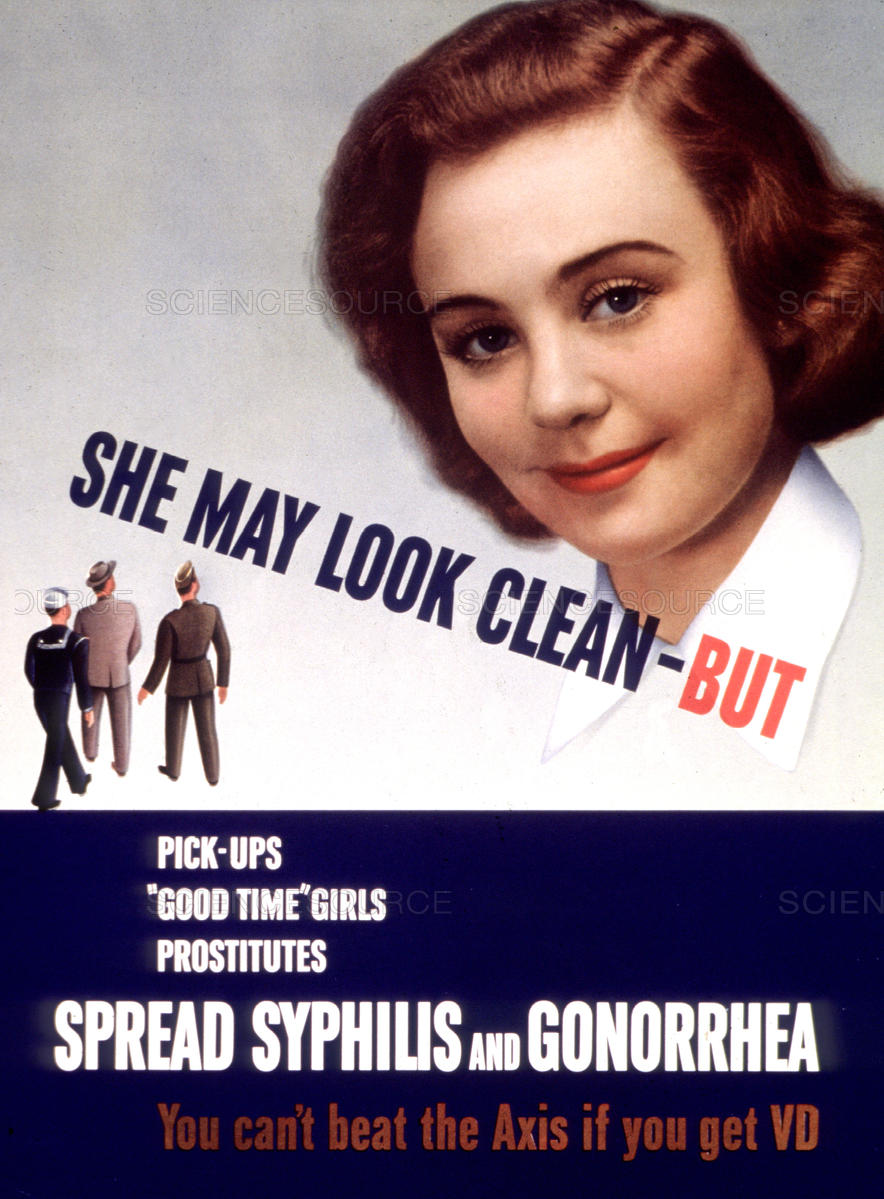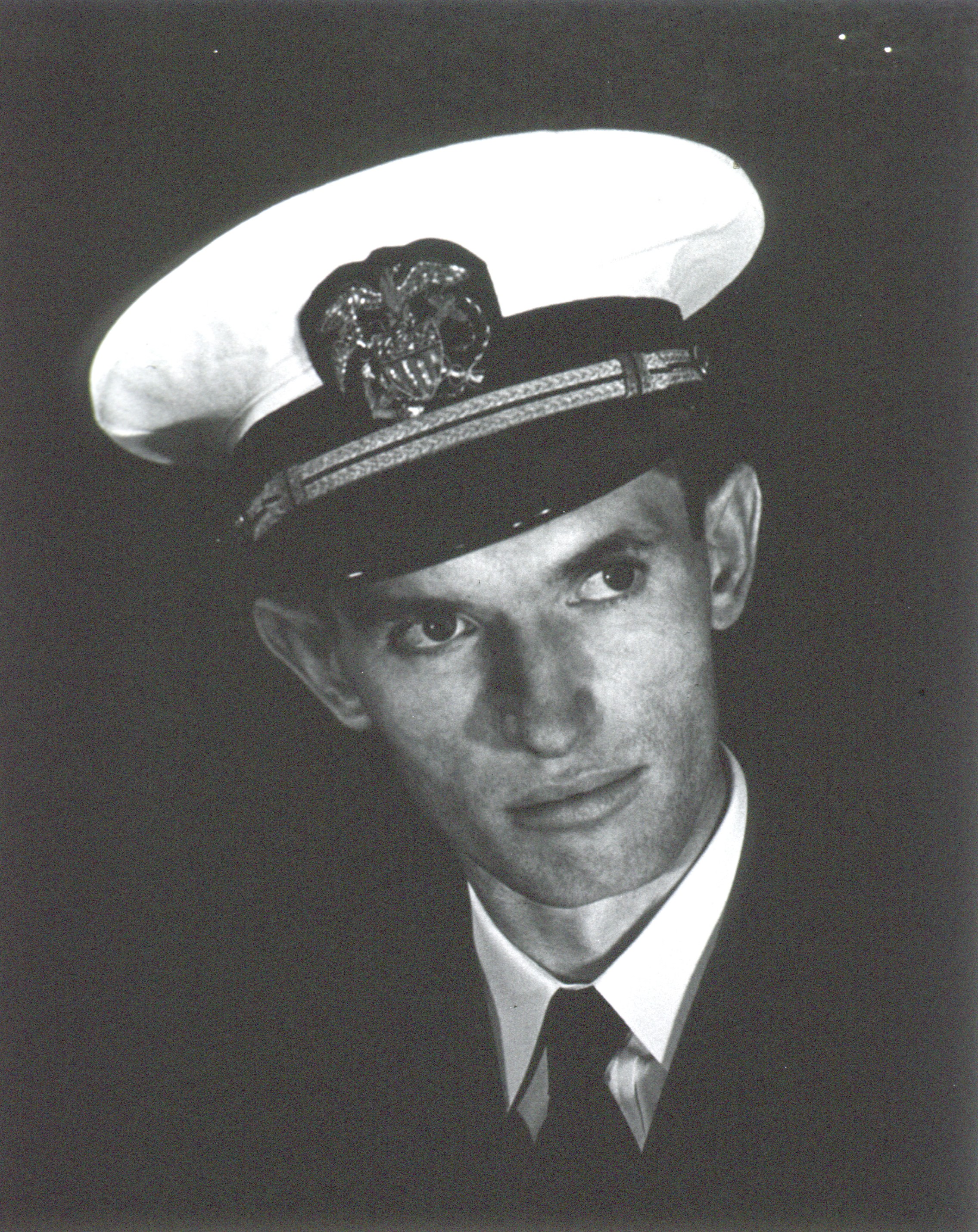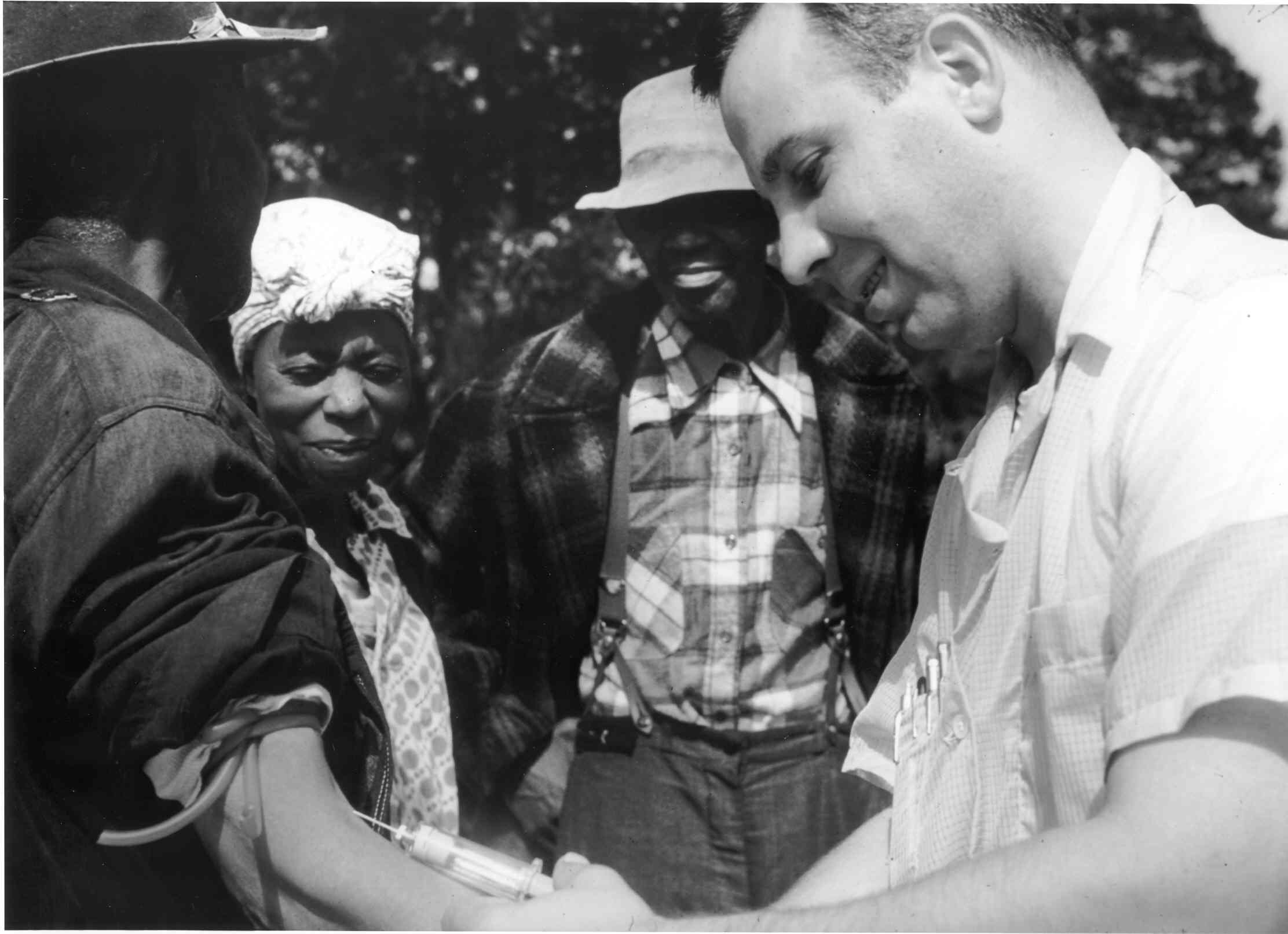

(194-, Records of the Centers for Disease Control and Prevention)
Photo Description: A photograph of one of the patients in the Tuskegee Experiments. It is unsure what the scientists are checking for, but they are most likely checking either the sensitivity after the inoculation of venereal diseases or the effects it had on the patient's body.
“...In the early twentieth century, estimates were that 1/10 people would contract syphilis at some point in their lives and perhaps 2-3 times as many people would contract gonorrhea,” ~ Venereal Disease Visual History Archive
How the Experiment Came to Be
WWI and WWII
(Year with mercury, 194-, The National Library of Medicine)
Photo Description: A propoganda poster to scare soldiers away from having sexual contact with sex workers as mercury (rather painful) was a treatment for venereal diseases at that time.


In WWI & WWII, many soldiers were dying from venereal diseases. War was stressful; people needed relief. There was limited knowledge of such diseases; contraceptives were next to none.
Penicillin, discovered in 1943, was proven to be effective against venereal diseases, however it was costly and treatment was long-term, putting soldiers out of the war.
- Questions arise:
- Can you cure venereal diseases quickly?
- How do STIs affect different individuals?
- Can you make the cure cheap?

(She May Look Clean..., 1940, National Archives and Records Administration)
Photo Description: A propoganda poster to warn soldiers that sex workers may have concealed venereal diseases.
Our Antagonists
John Charles Cutler

(John Cutler, 19--, National Library of Medicine)
John Charles Cutler

(University of Pittsburgh)
John Cutler (1918-2003) earned a doctorate from Case Western Reserve Medical School. From 1942-1967, Dr. Cutler worked at the USPHS, where he conducted research on STI treatments. He oversaw the infamous Guatemala Syphilis Experiment.
After he retired from the service, he taught medicine at the University of Pittsburgh - where Dr. Reverby discovered the files.
John Friend Mahoney
John Mahoney (1889-1957) earned his doctorate from University of Marquette After serving WW1, he worked later in the USPHS from 1919-1948. He found a way to use penicillin to treat STIs. Dr. Cutler entrusted Dr. Mahoney to guide the STI research on Terre Haute and the GSE.

(John Mahoney, 19--, National Library of Medicine)
John Friend Mahoney
Similar Experiments
Tuskegee
This experiment went on from 1932-1972 in Tuskegee, Alabama, where the subjects were African-Americans, tricked into thinking they would be cured from their venereal disease. Scientists studied the effects of untreated gonorrhea and syphilis
John Cutler, though not directly part of the team, supported the project and implemented some aspects of the experiment in the GSE.
"He'd get mad about it...He said, 'They just took us up here and made guinea pigs of us.'" ~ Ralphine Pollar Harper [daughter of victim from Tuskegee expermient describing what her father went through]
(19--, National Archive and Records Administration)
Photo Description: One of the scientists injecting a fluid (unsure if it is a treatment or venereal diseases) into an African-American participant in the Tuskegee Experiment.

Terre Haute

(FCI Terre Haute)
Photo Description: An overview of the Terre Haute Prison above ground.
This experiment went on from 1943-1944 in Terre Haute, Indiana.
Conducted by Drs. Cutler and Mahoney, the study focused the effects of STIs and developed medication on prisoners.
Prisoners gave their consent, but scientists had bad inoculation (sex was better than artifical) and limited number of volunteers.
Nuremberg Code
The Nuremberg Code (1947) and the Guidelines for Human Experimentation (1931) had dictated that under no circumstances, should scientists experiment on unconsenting persons. The scientists also would have to explicitly inform of the study’s intentions.